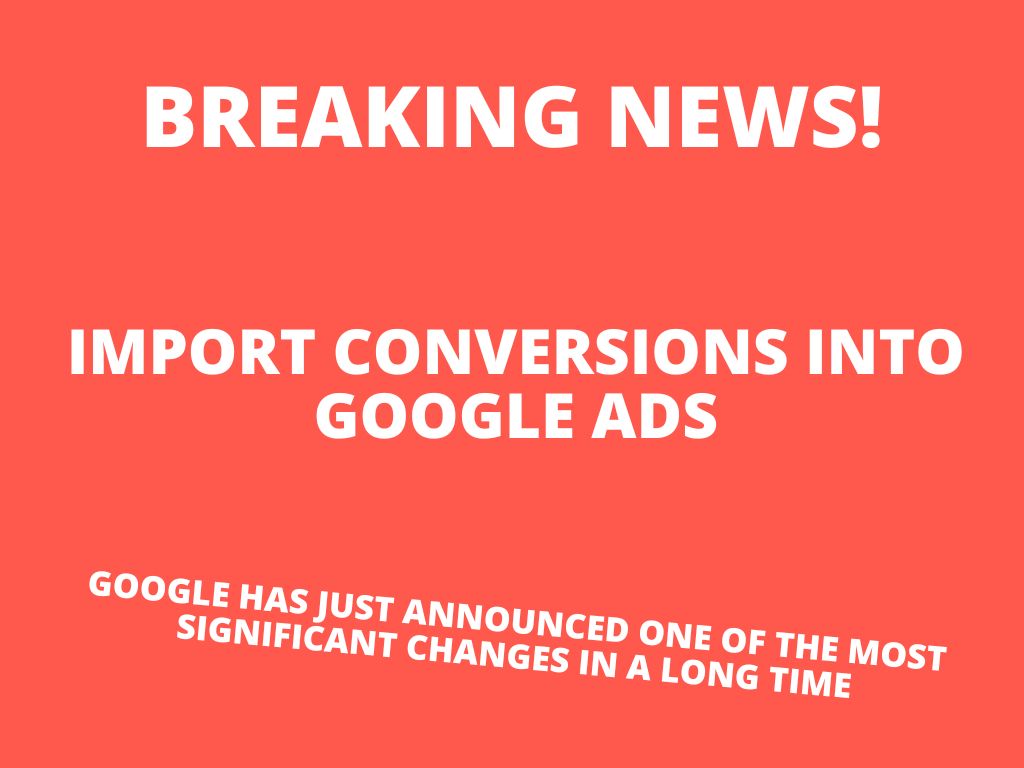
Google has just announced one of the most significant changes in a long time – import conversions into Google Ads
Google has just announced one of the most significant changes in a long time. They have shifted from their last non-direct click import from GA4 to Google Ads to a full cross-channel conversion credit import.
In this post, I will explain the difference between before and after. Let’s begin by mapping out a typical buying journey:
On Day 1, a customer makes a Google Shopping search, clicks to shop and sees the product, but doesn’t buy.
On Day 3, the customer clicks on a Facebook retargeting ad and makes a purchase.
Google Analytics 4 last non-direct click import (before):
As Google Analytics used a last non-direct click attribution model, Facebook was credited with 100% of the conversion value in this journey, as it was the last click before conversion. When importing conversions from Google Analytics into Google Ads, this conversion wouldn’t appear inside Google Ads since it wasn’t the “last non-direct click” in Google Analytics.
Google Analytics 4 full cross-channel conversion credit import (soon to be released):
With this upgrade, full cross-channel conversion credit will now be imported into Google Ads (even if the last non-direct click wasn’t Google advertising). This means that Google Ads can now get a fraction of the value and conversion attributed in Google Ads – let’s say you’re using a linear model – Google will get 0.5 conversion and 50% of the conversion value for this journey.
It’s difficult to gauge the exact impact until we see how it’s implemented in action, but I believe the new funnel cross-channel import is invaluable for reporting and will provide a more accurate representation of conversion value when including the impact of other channels. It will also make it possible to identify huge gaps in the values tracked by Google Ads vs GA4 cross-channel credit product/ads and adjust bids/changes accordingly.
That being said, GA4 tracking still has its flaws compared to Google Ads tracking:
Here are some differences:
GA4: Does not track view-throughs for networks like display or YouTube, while Google Ads tracking can.
GA4 does not have built-in cross-device identification, so you need user IDs, while Google Ads tracking uses logged-in user data to identify users across devices and also have Enhanced Conversion to track and identify users across devices with hashed first-party data.
GA4 is unable to provide full server-side tracking unless a script fires, while Google Ads offers complete server-side tracking with offline conversions click import which bypasses ad blockers and is collected on the server level.
These factors play an integral role in optimizing performance as they determine what data is received by bidding algorithms used by Google Ads – this means that Google Ads tracking will still be my preferred choice for bidding (Primary). But GA4 import will likely be my preferred choice for reporting.
Was this article helpful?
Support us to keep up the good work and to provide you even better content. Your donations will be used to help students get access to quality content for free and pay our contributors’ salaries, who work hard to create this website content! Thank you for all your support!
Reaction to comment: Cancel reply